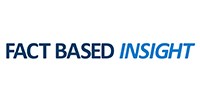Quantum Software Outlook 2020: Part Two

(FactBasedInsightQuantumSoftwareOutlook2020.PartTwo)
Welcome to FactBasedInsight’s “Quantum Software Outlook 2020: Part Two.
In 2020 everyone will want to persuade you to join their quantum software camp.
Not everyone will come away happy, writes contributor Dr. David Shaw.
Today’s segment focuses on “To Watch in 2020”.
Stay tuned in this space next week to read Quantum Internet Outlook: Part One.
To watch in 2020
IBM Q – By far the leading platform for quantum first contact. The wider user base now stands at 193,000 cloud users, 115 billion circuits executed, 240,000 development kit downloads, 200+ external papers, 1500+ colleges and universities, 300+ schools, 300+ private institutions. The IBM Q Experience offers a free easy-to-use introductory experience. The more powerful QISKit, including the OpenQASM intermediate level language is well established in research and expert educational use. Combined with leading processors and a stable development path IBM will be a tough nut to displace from this segment of the market in the short term.
D-Wave Leap – Supported by their Ocean software development kit and focused specifically on quantum annealing. Its growing user community has developed 200+ pilot applications. While most quantum computing startups are still talking about how much investor funding they have raised, D-Wave is able to point to $60m of customer contracts. In 2019 D-Wave expanded access to their Leap quantum cloud service to Europe and Japan. Watch out for D-Waves’ partnership with NEC, including a focus on hybrid solutions and enhanced applications development capability, significantly strengthening this ecosystem.
Rigetti Quantum Cloud Services – Supported by the Forest development environment featuring the Quil instruction set and pyQuil library. Rigetti point to the unique features of their setup that specifically facilitate near-term hybrid quantum-classical applications: tight coupling of CPU & QPU directly within QCS, support for (iterative-processing friendly) parametric compilation and (latency-friendly) active qubit reset. Activity in this ecosystem has been bolstered by the acquisition and integration of QxBranch and the lure of the Rigetti $1m Quantum Advantage prize. Rigetti currently offer an Aspen 32-qubit processor and are focusing on increasing the scale and performance of their devices. How many expert users will it attract?
Amazon Braket – 2019 saw the dramatic announcement that Amazon Web Services, a leader in conventional cloud computing are finally entering the quantum sector. Braket promises a hardware agnostic development environment with access to a variety of classical simulators and quantum processors from a variety of providers (currently IonQ, Rigetti and for quantum annealing D-Wave). There is an emphasis on training and introductory materials and easy to access virtual environments. This platform seems well placed to appeal to corporate teams wanting to get a first foot in quantum, but not wanting to commit to one hardware provider. When will this service move beyond the current ‘preview’ phase? How many users will it add?
Microsoft Quantum Azure – Announced but not yet publically launched. This service looks to be a big enhancement of Microsoft’s previous offer, promising access to quantum hardware from a variety of partners (currently IonQ, Honeywell and QCI are named). Featuring Q#, its purpose-designed quantum high-level programming language, this could be a popular choice for corporate software teams familiar with Microsoft’s .Net and Visual Studio environments and wanting to build initial experience with quantum. Watch out for the public launch. How many users will it add?
Google – Currently offering the Cirq development framework, and notable participants in the ProjectQ and OpenFermion open source initiatives. Google has made no secret of its plans to launch a cloud service. Access to its early supremacy era processors will give it a strong cachet. Cirq is aimed squarely at NISQ applications and is supported by strong internal work on early applications. Expect this to make a big splash when launched.
Atos Quantum Learning Machine – The QLM is a powerful classical simulator rather than a quantum computer. But by offering a relatively affordable standalone on-premise package Atos provides a solution ideal for corporates worried about the security of sensitive research passing onto a cloud environment. Partnering with Zapata to bundle the Orquestra software platform with QLM promises a uniquely vertical industry specific focus. Who needs a real quantum processor that hasn’t even shown quantum advantage yet?
Origin Quantum – This startup based in Hefei, China is currently offering a simulator based quantum cloud service. Will we see it add access to one of its early quantum processors?
Hardware agnostic startups – Software led players such as Zapata, QC Ware and Strangeworks will want to work with the widest possible selection of hardware options. Each will work hard to build-up a community. QC Ware’s development of the successful Q2B conference series and Strangeworks’ activity on Stack Overflow are not accidents. Watch out for which hardware majors are willing to support a genuinely level playing field.
Compiler supremacy – Platforms aimed at serious research and development use are likely to increasingly compete in terms of the efficiency of the software environment they provide. Will we see a software provider able to claim that they delivered a quantum supremacy calculation based on compiled rather than handcrafted code?
Airbus Quantum Computing Challenge –1000+ respondents from 70+ countries registered an interest in the challenge. 160 initial proposals have become 36 final submissions. An impressive jury of eight international quantum experts has been assembled. Watch out for awards in Q1/Q2.






















